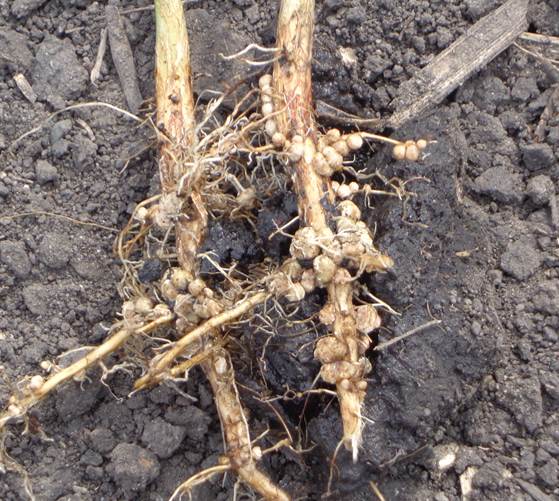Harvest is when farmers reap the reward of a well-nodulated legume crop, and can see the result of the inoculant first used during seeding. Unfortunately, there are times when adequate nodulation does not occur, even when an inoculant has been used. Listed below are several reasons as to why this might happen:
- soil pH: rhizobia struggle to survive when pH is below 6 or above 8
- soil moisture: extremely dry soils can cause rhizobia to dry out and die before they invade the roots, while water-logged soils can reduce available oxygen and drown out the rhizobia
- soil temperature: ideal temperature for nodulation is between 25-30°C (77-86°F), with nodulation beginning to delay or slow down in cooler temperatures
- nitrogen levels: when residual N is above 40 lbs/acre, or if any N is applied other than a starter application, nodule formation will be delayed or stopped entirely
- soil salinity: extreme levels can affect survivability of both the rhizobia and crop
- soil fertility: N-fixation is especially sensitive to inadequate or excessive amounts of phosphorus, potassium, iron, molybdenum, manganese, calcium
- seed treatment compatibility: while inoculants are generally compatible with most seed treatments, be sure to contact your rep to be sure of compatibility
- handling and storage: be sure to follow all direction provided to ensure that the inoculant is handled and stored properly
Since inoculants contain live bacteria, they can be susceptible to a variety of conditions. However, when care is taken, their use is more than worthwhile since a well-nodulated crop can fix up to 70% of it’s own nitrogen needs. For general information on inoculants, please visit www.xitebio.ca/products/#faq.
Image source: XiteBio Technologies Inc.


